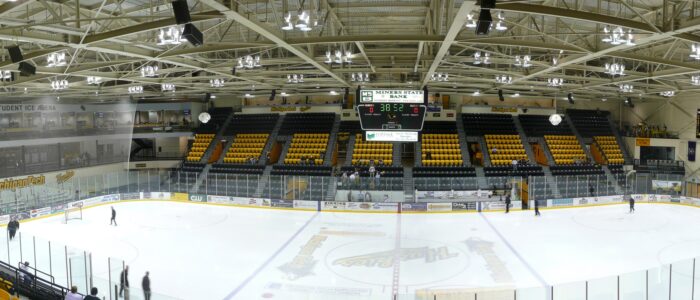“The human soul longs for things higher, warmer, and purer
than those offered by today’s mass living habits.”
— Alexander Solzhenitsyn
History of Western Civilization Told Through the Acoustics of its Worship Spaces

“The human soul longs for things higher, warmer, and purer
than those offered by today’s mass living habits.”
— Alexander Solzhenitsyn
History of Western Civilization Told Through the Acoustics of its Worship Spaces
Fall Field Sport Standards | Standards Pennsylvania
Dickinson's exciting new model of career services provides students with additional layers of tailored guidance and support. https://t.co/hMaS4Imalh pic.twitter.com/wNNC1O2Pzk
— Dickinson College (@DickinsonCol) January 2, 2025
This content is accessible to paid subscribers. To view it please enter your password below or send mike@standardsmichigan.com a request for subscription details.
Here are direct links to the articles and blog posts I mentioned (or very close matches where the exact title varied slightly but the content aligns perfectly):
College
Today we continue drilling into the transcript of proposed changes the International Code Council Group B tranche of titles relevant to our safety and sustainability agenda with particular interest in places of assembly for athletic activity. Use the login credentials at the upper right of our home page.
Complete Monograph of the April 27 – May 6 Proposed Changes heard April 27-May6 in Orlando: Complete Monograph (2630 pages)
Results of the April meetings to be heard at the October 22-30 Hearings in Cleveland Ohio: 2025 REPORT OF THE COMMITTEE ACTION HEARING (CAH1)
Proposals of interest today:
S71-25 Table 1607 Minimum Uniformly Distribution Live Loads (for stadiums) – Page 1089
S74-25 1607.9 Loads on stadium handrails, guards, grab bars and seats – Page 1098
Video of spectator balcony railing collapse that killed 7 college students in Bolivia – Page 1102
Related coverage:
— MythoAmerica 🌲 (@MythoAmerica) August 31, 2024
New to the women’s golf team is freshman Bjarnadottir, a business management major from Mosfellsbaer, Iceland.
For the full story on Bjarnadottir and her fellow Icelandic team mates: https://t.co/hasWxCRNiC pic.twitter.com/AZACImpXqQ
— Newman University (@NewmanU) October 22, 2025
Building, operating, and maintaining athletic scoreboards requires a range of technologies, including hardware and software components. These are central features in nearly every athletic event, governing the state of play and attendee response.
Scoreboard Hardware: A range of hardware components, including display panels, control consoles, sound systems, and wiring, is necessary to build an athletic scoreboard. While there are no universal standards for LED displays in athletic scoreboards, but there is a common vocabulary used by manufacturers and installers follow to ensure quality, performance, and safety:
Power Reliability. Event timing and attendee emergency egress systems rest upon best practice found in Chapter 2 and Chapter 7 of NFPA 70 National Electrical Code and NFPA 110 Standard for Emergency and Standby Power Systems.
Lightning Protection. CLICK HERE for our coverage of the “30-30 Rule”
Operation and Maintenance Safety. Because so many scoreboards are occupiable the Chapter 3 Occupancy Classification and Chapter 10 (Means of Egress) of the International Building Code applies. Many are several stories high requiring attention to stairway construction details.
Control Software: Software that enables the scoreboard operator to input game data and control the scoreboard display is essential.
Mass Notification: Egress and Evacuation requirements are asserted in NFPA 72 – National Fire Alarm and Signaling Code.
Audio Standards: lorem ipsum
Wireless Communications: Many modern athletic scoreboards use wireless communication systems to connect the scoreboard control console to the scoreboard display. This allows for greater flexibility in installation and reduces the need for cabling.
LED Technology: LED technology has revolutionized athletic scoreboards in recent years. LED displays offer superior brightness, color accuracy, and energy efficiency compared to traditional scoreboards but must conform to local night-sky regulations.
Power Management Systems: Athletic scoreboards require significant amounts of power to operate, and efficient power management systems are necessary to ensure reliable and continuous operation. Maintaining temperatures — heating and cooling within specification — is a priority for maximum operable life.
Maintenance and Diagnostic Tools: To maintain and troubleshoot athletic scoreboards, specialized tools and software are necessary. This may include diagnostic software, specialized cables, and other testing equipment.
Overall, the technologies required to build, operate, and maintain athletic scoreboards are diverse and constantly evolving. A range of specialized hardware and software components, as well as skilled technicians, are necessary to ensure that athletic scoreboards remain functional and reliable.
Join us today at 11 AM/ET (15:00 UTC) when we review best practice literature. Open to everyone. Use the login credentials at the upper right of our home page. This topic is also tracked by experts in the IEEE Education & Healthcare Facilities Committee which meets online 4 times monthly in Central European and American time zones and is also open to everyone.
COMPLETE MONOGRAPH: 2024 GROUP A PROPOSED CHANGES TO THE I-CODES
Play is the making of civilization—how one plays the game
more to the point than whether the game is won or lost.
The purpose of this standard is to establish the minimum requirements to safeguard health, safety and general welfare through structural strength, means of egress facilities, stability and safety to life and property relative to the construction, alteration, repair, operation and maintenance of new and existing temporary and permanent bench bleacher, folding and telescopic seating and grandstands. This standard is intended for adoption by government agencies and organizations setting model codes to achieve uniformity in technical design criteria in building codes and other regulations.
FREE ACCESS: Standard on Bleachers, Folding and Telescopic Seating, and Grandstands
We are tracking the changes in the transcripts linked below:
ICC 300-2020 edition Public Input Agenda – January 2022
ICC 300-2017 edition Public Comment Draft – October 2017
Consensus Committee on Bleacher Safety (IS-BLE)
This title is on the standing agenda of our Sport, Olahraga (Indonesian), رياضة (Arabic), colloquia. You are welcomed to join us any day at with the login credentials at the upper right of our home page.
2024/2025/2026 ICC CODE DEVELOPMENT SCHEDULE
Virtual reality technology in evacuation simulation of sport stadiums
Code of Practice for Emergency Sound Systems at Sports Venues








Posted December 6, 2019
At the April International Code Council Group A Hearings there were three candidate code changes related to the safety standard of care for athletic venues:
E104-18 (§ 1017 regarding exit travel distances) | PDF Page 218 of the Complete Monograph
F9-18 (§ 304 regarding spaces under bleachers) | PDF Page 1021 of the Complete Monograph
F135-18 (§ 907 regarding communication systems for open air bleachers) | PDF Page 1296 of the Complete Monograph
These concepts will likely be coordinated with another ICC regulatory product — ICC 300 – Standard on Bleachers, Folding and Telescopic Seating, and Grandstands — covered here previously. ICC 300 is a separate document but some of the safety concepts track through both.
The ICC Public Comment Hearings on Group A comments in Richmond Virginia ended a few days ago (CLICK HERE). The balloting is being processed by the appropriate committee and will be released soon. For the moment, we are happy to walk through the proposed changes – that will become part of the 2021 International Building Code — any day at 11 AM Eastern time. We will walk through all athletic and recreation enterprise codes and standards on Friday, November 2nd, 11 AM Eastern time. For access to either teleconference, click on the LIVE Link at the upper right corner of our home page.
Category: Athletics & Recreation, Architectural, Public Safety
Contact: Mike Anthony, Richard Robben, Jack Janveja
LEARN MORE:
Posted October 19, 2017
The International Code Council has launched a new revision cycle for its consensus document — ICC 300 – Standard on Bleachers, Folding and Telescopic Seating, and Grandstands. The purpose of the effort is the development of appropriate, reasonable, and enforceable model health and safety provisions for new and existing installations of all types of bleachers and bleacher-type seating, including fixed and folding bleachers for indoor, outdoor, temporary, and permanent installations. Such provisions would serve as a model for adoption and use by enforcement agencies at all levels of government in the interest of national uniformity.
Comments are due December 4th. The document is free. You may obtain an electronic copy from: https://www.iccsafe.org/codes-techsupport/standards/is-ble/. Comments may be sent to Edward Wirtschoreck, (888) 422-7233, ewirtschoreck@iccsafe with copy to psa@ansi.org)
* With some authority, we can claim that without Standards Michigan, many education industry trade associations would not be as involved in asserting the interest of facility managers in global consensus standards development processes. See ABOUT.
This facility is a key hub for UIL (University Interscholastic League) tennis in the Dallas-Fort Worth area,
GMC Varsity WIN 5-0 today against the Princeton Vikings! Great job ladies! #GoHawks @EAST_HAWKS Sycamore tomorrow AWAY! BRING IT, LADIES!!! pic.twitter.com/kEVXsFDzKM
— Lakota East Girls Tennis (@LEHSGirlsTennis) September 9, 2021
𝔸𝕋𝕃𝔸ℕ𝕋𝔸 𝕆ℙ𝔼ℕ
Andres Martin receives a wild card into the 2023 @ATLOpenTennis open for College Night! #TogetherWeSwarm | #AtlantaOpen
🔗: https://t.co/ZdwaQDfF0i pic.twitter.com/FkVVO4cAsV
— Georgia Tech Men’s Tennis (@GT_MTEN) June 27, 2023
New update alert! The 2022 update to the Trademark Assignment Dataset is now available online. Find 1.29 million trademark assignments, involving 2.28 million unique trademark properties issued by the USPTO between March 1952 and January 2023: https://t.co/njrDAbSpwB pic.twitter.com/GkAXrHoQ9T
— USPTO (@uspto) July 13, 2023
Standards Michigan Group, LLC
2723 South State Street | Suite 150
Ann Arbor, MI 48104 USA
888-746-3670
